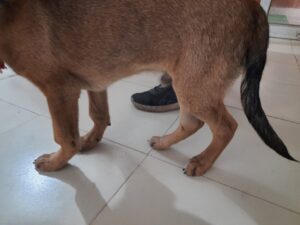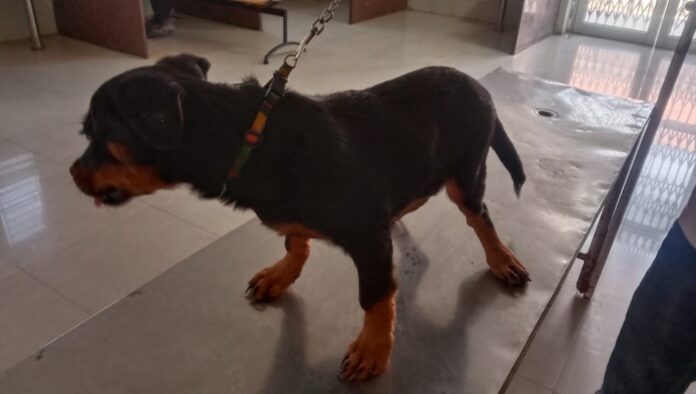Therapeutic management of Rickets in dogs
Kavita Jaidiya1, Sulochana dariya 2 and Chitra Jaidiya 3
Author 1 – Department of Veterinary Medicine, CVAS, Bikaner
Author 2 – Department of Veterinary Pathology, PGIVER, Jaipur
Author3–Chitra Jaidiya, Department of Veterinary Public Health and Epidemiology, CVAS, Bikaner
Abstract
Rickets is classical metabolic bone disease of young rapidly growing animals characterized by defective calcification of growing bones. Two dogs were presented for treatment in the CVAs, Bikaner with history of having lameness, abnormal gait, nodular growth of long bones, mainly radius and ulna in forelimb, joint pain and reluctant to move. Treatment was done with ostopet syrup 5ml twice daily, syrup zivit( multivitamin) were given @ 2ml orally daily. Along with this owner was suggested for exposure of pup in the sun light atleast for 20-30 minute daily.
Key words- Rickets, nodular grouth, lameness
Introduction
Rickets is a disease of the developing, skeleton, where defective mineralization occurs not only in bone, but also at the cartilaginous pollution of the growth plate(Karane & Holick 1980).
It is characterized by a defective calcification of epiphyseal cartilage, delay in maturation and arrangement, and of cartilage cells & failure to remodel freshly deposited bone together these derangement result in enlargement of metaphyses and weakening of bone shafts that in turn lead to bending deformity, with bowing of the limb( Krane &Holick, 1980).
It is commonly occurs in young canine especially growing pups and commonly occur in dogs when they are not receiving correct allocation of nutrients such as vitamin A, D, E, or Calcium.
Most of the cases are caused by dietary deficiency of either Vitamin D or Calcium.
Material and methods
A Two dogs were presented for treatment in the CVAs, Bikaner with history of having lameness, abnormal gait, nodular growth of long bones, mainly radius and ulna in forelimb, joint pain and reluctant to move.
During clinical examination beaded structure( rachitis rosary), Bow like posture and limping in gait was observed.
Radiographic examination of both forelimb was performed.
On the basis of history, clinical signs and radiographic examination, the presumptive diagnosis was determined to rickets.
Treatment was done with ostopet syrup 5ml twice daily, syrup zivit( multivitamin) were given @ 2ml orally daily. Along with this owner was suggested for exposure of dogs in the sun light atleast for 20-30 minute daily.
Result and Discussion
After treating for one month the both dog started showing improvement in his gait and posture and showed the sign of recovery.
As in young one with rickets, muscle weakness was a promine feature in these pups and coupled with loss of ligamentous support, gave rise to hyper extension of limb.
Characteristic radiological changes were present also with marked widening of the growth plates in axial and radial directions resulting in mushroomed metaphyses. The easiet way to prevent the development of nutritionally complete food properly for growth.
References
Krane, S.M & Holicks, M.F.(1980) Metabolic bone disease. In : Harrison’s Principles for internal Medicine, 9th edn. Eds K.J. isselbacher, R.D.Adams, E, Braunwald, R.G.Peteus.dorf and J.D Wilson, Mc Graw Hill, New York, PP-1854-1860.
S.S. Ghoke, K.S. Thorat and P.B. Hase, Clinical management of Rickets in 15 Canine patients , Intas Polivet (2012) Vol. 13 (ll): 357-358.



